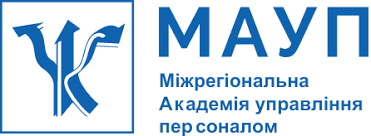USE OF THE GESTALT THERAPY METHOD IN THE WORK OF A PSYCHOLOGIST IN THE TREATMENT OF PSYCHOSOMATIC REACTIONS TO STRESS IN THE POPULATION IN WAR CONDITIONS
DOI:
https://doi.org/10.32689/maup.psych.2025.1.15Keywords:
Gestalt therapy, psychocorrection, psychosomatic disorders, stress, warAbstract
The article presents the results of a study of a topic relevant for modern psychology – psychocorrectional work of a psychologist using the Gestalt therapy method in the treatment of psychosomatic reactions to stress in the population in war conditions. The paper presents theoretical and methodological approaches to studying the problem of stress, psychosomatic reactions to stress, the possibilities of Gestalt therapy in the psychocorrection of psychosomatic disorders, empirically determines the psychological characteristics of individuals with psychosomatic disorders; a system of work on the correction and prevention of psychosomatic disorders in the population during wartime is developed and proposed. It has been found that extreme stressful situations affect the susceptibility and features of the course of psychosomatic diseases. Moreover, there is a fairly large number of separate areas of study of psychosomatic pathology: stress and adaptive reactions, stress and stress or damage, stress factors and the picture of their subjective experience, etc. Psychosomatic medicine considers psychosomatic states as an interaction of biological, mental and social factors. In general, psychosomatic medicine is defined as the science of treatment and the relationship between the mental and somatic state of the patient. The combination of the mental and physical is the basis of this medicine. It is shown that Gestalt therapy suggests not to look for the causes of difficulties, but to observe the current process, the development of contact between a person and the environment, as well as possible disruptions of this contact. This is done in order to involve a person in creative adaptation, taking into account their own needs and desires, as well as the surrounding world. Significant in Gestalt therapy are: the opportunity to experience unfinished situations in the past, to work out new patterns of behavior in different situations; to realize the factors (prohibitions, beliefs, unsatisfied needs, suppressed sensations, emotions and feelings, irrational thoughts) of the emergence of psychosomatic symptoms and disorders; building conscious harmonious relationships with the world, with others, with one's own body, which will certainly contribute to improving and strengthening health. Conclusions are drawn regarding the features of the Gestalt approach to solving psychosomatic problems and the effectiveness of Gestalt therapy in the treatment of psychosomatic disorders.
References
Абабков Ст. А., Перрі М. Адаптація до стресу. Основи теорії, діагностики, терапії. Видавництво «Мова» 2009.
Мещеніна Т., Пашілова О. Особливості психологічної реабілітації учасників збройних конфліктів. Прикладна психологія та психоаналіз, 2009. №4.
Пігулівська І. С. Як позбутися стресу та депресії. Легкі способи перестати турбуватися та стати щасливим. Київ, Центрполіграф, 2012. 28 с.
Перлз Ф. С., Гудмен П. Теорія гештальт-терапії. Інститут загальногуманітарних досліджень. 2001.
Психологія посттравматичного стресу. Частина 1. Теорія та методи. Київ, Когіто-Центр. 2007. 208 с.
Решетников М. Наслідки екстремальних факторів. ОБЖ. Основи безпеки життєдіяльності. № 11. 2009. С. 50–53.
Ромек В. Г. Психологічна допомога в кризових ситуаціях / В. Г. Ромек, В. А. Конторович, Є. І. Крукович. Мова. 2011. 256 с.
DSM-5 Diagnostic and Statistical Manual of Mental Disorders. NY, American Psychiatric Press. 2013.
Salinsky J, Otten H. The Doctor, the Patient and their well-being – world wide: proceedings of the thirteenth International Balint Congress. Berlin, H. Ruckdruck Celle. 2003.
Ulri I. Ubеr. PTSD und Gruppen-psyсhothеrapiе mit Mеnsсhеn, diе durсh Kriеg traumatisiеrt sind. Diе kroatisсhе Erfahrung. Trauma und Gruppe. Arbeitshеfte Gruppenanalise. Furdеrvеrein Gruрреntherapie. Muпstеr, 2000. pp. 87–109.





